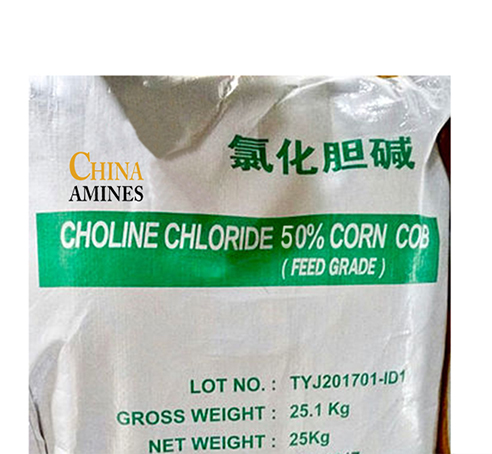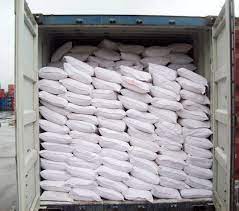1. Chemical Structure and Properties
Active Component: Choline Chloride (C₅H₁₄ClNO)
Structural Formula: [HOCH₂CH₂N⁺(CH₃)₃]Cl⁻ — a quaternary ammonium salt with a hydroxyl group and three methyl groups attached to a nitrogen atom
Carrier Material: Corn Cob Granules
Composition: 50% choline chloride adsorbed onto 50% processed corn cob (cellulose, hemicellulose, lignin)
Physical Properties:
Appearance: Light brown to tan granular solid with a mild, earthy odor
Particle Size: 1–3 mm granules; Bulk Density: ~0.6–0.7 g/cm³
Moisture Content: <7% (w/w)
Solubility: Choline chloride dissolves in water; corn cob swells but is insoluble
Key Features:
- Excellent flowability with minimal dust
- Fully biodegradable carrier supporting circular economy
2. Industrial Applications
Animal Feed Additive:
- Function: Prevents fatty liver syndrome and enhances feed efficiency in poultry/swine
- Dosage: 800–1,500 g/ton feed (NRC standard)
- Mechanism: Acts as a methyl donor to support methionine metabolism and lipid processing
Agricultural Use:
- Plant Stress Mitigation: Foliar sprays (0.2–0.5%) improve drought and salinity tolerance in maize, rice, and other crops
Advantages Over Synthetic Carriers:
- Sustainability: Utilizes agricultural byproducts
- Cost-Effectiveness: Lower cost compared to silica or polymer-based carriers
3. Safety and Toxicology
Choline Chloride:
- Oral Toxicity: Low (LD50 >5,000 mg/kg, rats); non-toxic
- Skin/Eye Contact: Mild irritation; non-sensitizing
Corn Cob Carrier:
- GRAS-listed (FDA 21 CFR 582.99); non-allergenic, non-carcinogenic
- OSHA PEL: 15 mg/m³; low dust due to granular structure
Handling Precautions:
- Recommended PPE: Nitrile gloves and safety goggles
- Storage: Keep in a cool, dry environment to prevent clumping
4. Environmental and Regulatory Compliance
Environmental Impact:
- Choline chloride: LC50 (fish, 96h) >100 mg/L; biodegradable (OECD 301F)
- Corn cob: Compostable; supports zero-waste agriculture
Regulatory Approvals:
- EU: Approved under EC 1831/2003 (E 3.1.1); REACH-exempt
- USA: GRAS-listed (21 CFR 582.5250); AAFCO-compliant
- China: Certified under GB/T 23735–2021 as feed-grade product
5. Case Studies and Application Insights
Case 1: Broiler Production in Brazil (2023)
- Trial: 1,000 g/ton of 50% corn cob choline chloride
- Outcome: 22% liver fat reduction, 7% FCR improvement under high-heat conditions
- Cost Savings: $0.90/ton compared to synthetic-based carriers
Case 2: Sustainable Rice Farming in Vietnam (2022)
- Application: 0.4% foliar spray in saline soils
- Result: 15% yield increase from enhanced osmotic regulation via betaine
Comparative Analysis:
- Pros: Biodegradable, affordable, and aligned with sustainable agriculture
- Cons: Slightly lower moisture resistance than silica-based alternatives



